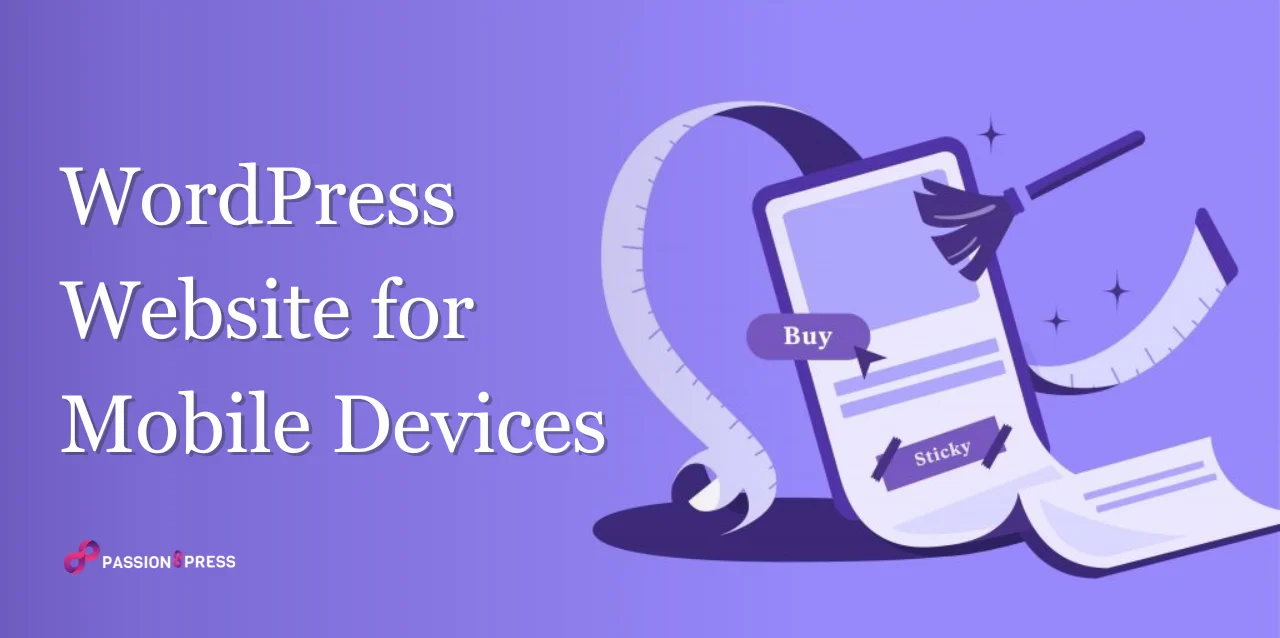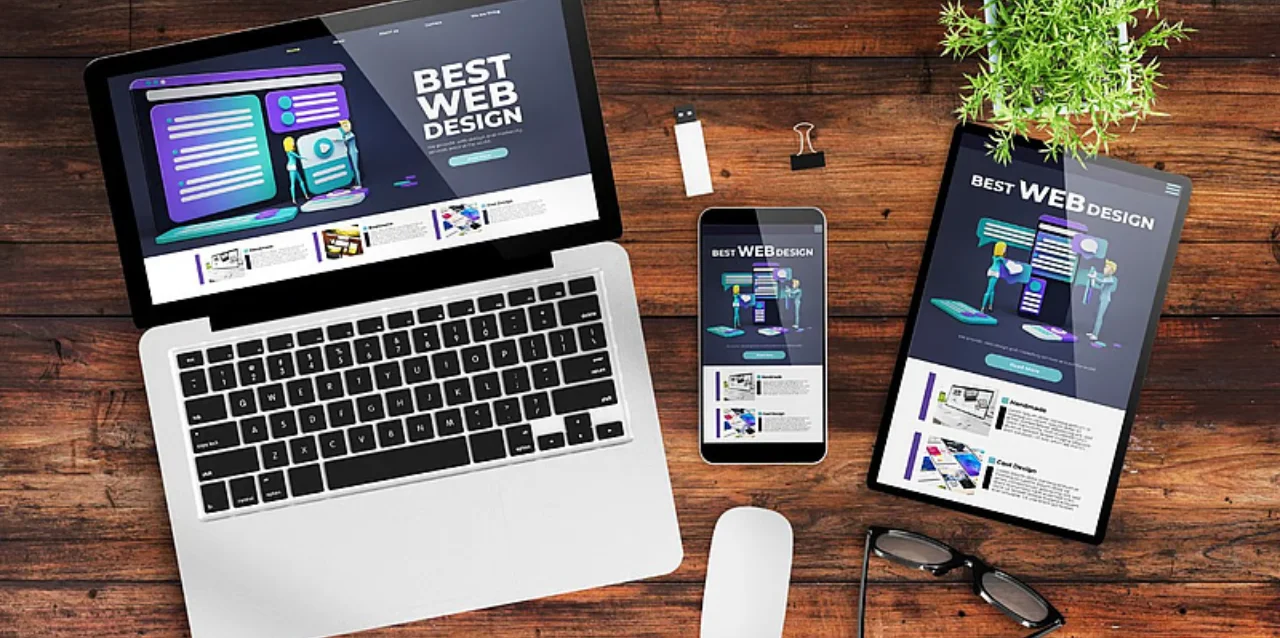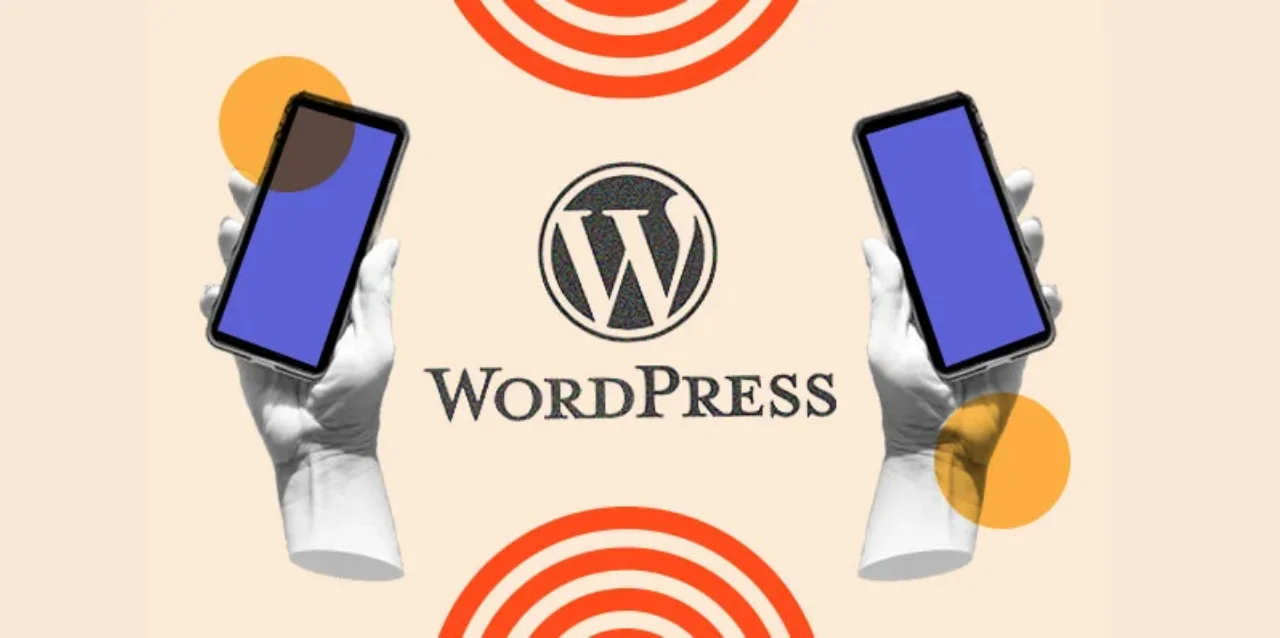You know how you can’t go anywhere without seeing someone glued to their phone? Well, it’s no surprise – mobile devices are everywhere these days, and they’re not going anywhere soon.
Recent statistics say there were over 7.1 billion smartphone users worldwide in 2021. And guess what? That number is expected to jump to 7.49 billion by 2025! Crazy, right? It’s like phones are becoming our extra limb or something!
It means more and more people are hopping online through their phones and looking for websites that load quickly, run smoothly, and keep them hooked. If your site isn’t mobile-friendly, you’re missing a massive chance untapped to connect with and convert potential customers.
So, you’re probably wondering, “How to optimize WordPress website for mobile?” Well, let us tell you, WordPress mobile optimization is like the king of the internet, powering over 40% of all websites out there. It’s good for many reasons:
- It’s free and super user-friendly.
- It’s a champ at making your site search engine-friendly.
- It grows with you, so as your site gets bigger, WordPress has got your back.
- Plus, it’s flexible, meaning you can customize it to fit your needs like a glove.
However, WordPress doesn’t automatically make your site mobile-friendly. You have to put in some effort to ensure your site looks just as catchy on a phone as it looks on a computer screen.
In this article, we’ll walk you through how to check if your WordPress site is mobile-friendly, techniques to make WordPress mobile optimization, and ways to boost its speed without sacrificing the quality of your site’s user experience for mobile users.
Ready to dive in? Let’s go!
In a hurry? Listen to the blog instead!
How To Check If Your WordPress Site Is Mobile-Friendly?
A mobile-friendly website ensures users have a smooth experience across all screen sizes without any WordPress performance drawbacks. You can assess your site’s mobile-friendliness using various online tools.
Among the top recommendations are Google Lighthouse and PageSpeed Insights, both developed by Google. Alternatively, you can rely on reliable tools like the Google Performance Mobile-Friendly Test, which may offer less technical insight but is valuable for enhancing the mobile user interface and experience.
If you are struggling with making your WordPress website look and perform great on mobile devices? Well, fret no more! Passion8Press is an amazing platform where you can easily hire WordPress developers who specialize in optimizing websites for mobile devices.
Whether your site needs a complete overhaul to become mobile-friendly or just a few tweaks to enhance its responsiveness, Passion8Press connects you with talented developers who can get the job done efficiently.
Outsourcing WordPress development services from passion8press comes with multiple feature support such as;
- Dynamic websites that captivate and engage your audience.
- Cutting-edge technology fused with user-centric design for active conversion-driven e-commerce storefronts.
- Versatile plugin and theme development expertise tailored to seamlessly integrate with your site.
- Precision customization of plugins and themes to match your specific needs, enhancing functionality and design.
- Sub-2-second website loading speeds are achieved through meticulous speed optimization.
- Unlimited 24/7 website edits to keep your site up-to-date and optimized at all times.
- Fully managed security with near-impenetrable protection using extensively tested configurations.
- Core file and database backups with live external backups on reliable servers and easy 1-click restoration.
- WordPress mobile optimization and tablet responsiveness audits of sites to meet Google’s standards and look great across all devices.
- Efficient malware removal services to swiftly detect and eliminate unauthorized intrusions, keeping your website secure.
Complete Strategies For WordPress Mobile Optimization For Users
For many website owners and developers, optimizing for mobile on WordPress can feel like a trial-and-error process. But it doesn’t have to be that way. The following tips form the foundation of every WordPress mobile optimization strategy for site use across the web.
Use a Responsive WordPress Theme
Think about it – if Amazon’s website wasn’t user-friendly on mobile, they could not have the massive impact they do now. But what exactly does it mean for a site to be responsive?
Responsive design ensures a good presentation of the website and functions across all screen sizes. It means elements are arranged, text is readable, and content fits the screen without overlapping. As mentioned earlier in this article, the stats emphasize how crucial this is for websites.
A responsive theme allows easy adjustments to accommodate different screen sizes while maintaining visual and performance quality. When selecting a responsive theme, it’s essential to consider the developer’s contributions.
Also, ensure compatibility with the latest WordPress development and PHP versions to ensure seamless operation with your server or hosting provider.
Responsive WordPress Themes Examples Are:
- Astra
- Divi
- Genesis Pro
- Elementor Hello
Consider Mobile-First Development
The mobile-first approach to development and design prioritizes creating content and features for mobile users and then adjusting the design for desktop users. This method streamlines product delivery while maintaining quality across various screen sizes.
To implement this strategy in WordPress mobile optimization, initiate by designing for smaller screens before scaling up to larger ones. Pay close attention to how images appear on different devices during this process.
Now, you might be wondering, what sets the mobile-first approach apart from responsive design? In essence, the mobile-first approach focuses on achieving a responsive design by starting with the smallest screen size and scaling up, whereas responsive design ensures that your WordPress website design looks great on all devices.
Mobile Optimized Website| Images and Videos
Multimedia and graphic content significantly impact site speed. That’s why in WordPress mobile optimization images and videos are crucial for enhancing performance on both mobile and desktop platforms.
When optimizing images for mobile devices, selecting the appropriate file format and compressing them as needed are essential steps. For instance, WebP has emerged as the modern standard for web images due to its smaller file size compared to JPEG and PNG. While JPEG is ideal for graphics with complex color compositions, PNG is preferable for the same images, and GIF is reserved for animated images exclusively.
Given that PNG is a larger file size than JPEG, it’s generally recommended PNG unless JPEG is specifically required. However, WebP stands out for its compact size compared to JPEG and PNG, facilitating faster site loading times without significant compromises in image quality.
Make Use Of Front-end Optimization
This task could entail an extensive list of reviews on your site, but 10web has streamlined the process. The tips are thoroughly outlined in this comprehensive article on front-end optimization.
They cover best practices for optimizing the front end, such as compressing and optimizing multimedia files, implementing lazy loading, caching, and much more. This aspect of WordPress mobile optimization is particularly crucial as it directly influences site speed.
Read More
How to Create a Website Using WordPress: A Complete Guide
How to Design a WordPress Website: 6 Easy Steps
Choose A Fast And Reliable Hosting Provider
This aspect is just as critical as the design and content of your site. If your hosting provider fails to deliver your website content promptly, you’re in the same predicament as a site owner or developer dealing with a non-responsive site.
Web hosting comes in various types. With shared hosting, which is often more economical, you share server resources with other users on the same server. Consequently, if another user on the server causes issues that disrupt its functionality, your website may suffer downtime as well.
It isn’t the scenario with automated hosting solutions like 10Web. 10Web hosting offers a high-performance infrastructure that ensures a 99.9% uptime for your website, a PageSpeed score of 90+, and real-time backups. Migrating a site to 10Web hosting is a simple 1-Click process through automated migration, allowing you to create a copy of your website on 10Web within minutes.
You Don’t Need AMP
Indeed, it’s quite likely that you won’t require it. Understandably, many site owners have adopted AMP to boost site loading speeds. But is it truly essential?
AMP is fantastic if your website primarily involves reading content without much interaction required. In such cases, you can benefit from the SEO advantages that AMP offers. However, if your site relies on user interaction for the optimal experience, it’s advisable to forego AMP and instead implement the best practices for page WordPress mobile optimization.
How To Speed Up Your Website For Mobile
WordPress mobile optimization for devices is vital for enhanced user experience. Here are the techniques:
Caching: Utilize browser, CDN, page, and server caching to store data for quicker access, reducing server requests and enhancing load times.
Eliminate Render Blocking Resources: Minify HTML/CSS/JS files to reduce file size and request-response time, ensuring faster loading.
Make Critical CSS Inline: Load critical CSS styles first to render visible elements promptly, enhancing user interactivity.
Use JS Delay: Delay non-critical JavaScript files to ensure faster HTML parsing and site loading.
Remove Unused CSS and JS: Identify and remove unused scripts and styles to minimize page load time.
GZIP Compression: Compress HTML, CSS, and JS files to facilitate faster transfer and improve site speed.
Lazy Loading: Delay loading of elements until needed, reducing initial page load time and enhancing performance.
Image Optimization: Optimize images by choosing the correct format and compressing them, combined with lazy loading for improved speed.
Optimize Font Delivery: Load fonts asynchronously to minimize render blocking and improve performance.
Use a CDN: Implement a Content Delivery Network (CDN) to serve content from the nearest server, reducing latency and improving load times.
Final Thoughts:
Now that you’ve gained insights into optimizing your website for mobile users and learned valuable techniques for effective WordPress mobile optimization on WordPress, it’s crucial to understand that WordPress optimization isn’t an instant fix.
It requires some testing to determine what works best for your specific situation. After all, you wouldn’t want to sacrifice image quality on a graphic design website in the pursuit of optimization. So, take the time to experiment with WordPress optimise for mobile and find the right balance that ensures both speed and quality for your mobile users.











